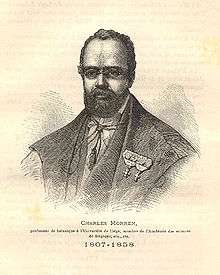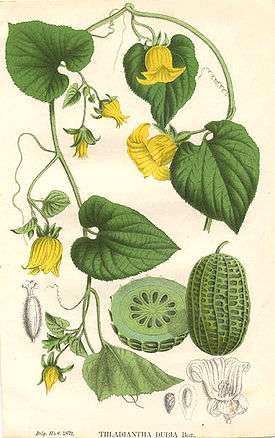Charles François Antoine Morren


from La Belgique horticole
Charles François Antoine Morren (3 March 1807 Ghent – 17 December 1858 Liège), was a Belgian botanist and horticulturist, and Director of the Jardin botanique de l’Université de Liège.[1]
Morren taught physics at Ghent University between 1831 and 1835. At the same time he studied medicine and graduated in 1835. He became Professor extraordinarius of botany at the University of Liège from 1835 to 1837, and full professor from 1837 to 1854.
Morren discovered that the vanilla flower is pollinated by the social and stingless Melipone bee, which occurs only in Mexico, obviating natural pollination in other countries. Hernán Cortés brought vanilla to Europe, but for more than 300 years the pollination mechanism remained a mystery. Morren was the first to discover a method for artificial pollination,[2] which made it possible to cultivate vanilla in the French colonies.
He was the father of Charles Jacques Édouard Morren. Morren and his son produced the journal La Belgique horticole, journal des jardins et des vergers. A total of 35 volumes were published between 1851 and 1885.
Morren also coined the term phenology,[3] which refers to the scientific discipline that studies the seasonal cycles of animals and plants. Morren first used the term phenology in 1849 during a public lecture at the Academy of Brussels. The first use of the term phenology in a scientific paper dates back to 1853 when Morren published “Souvenirs phénologiques de l’hiver 1852-1853” (“Phenological memories of the winter 1852-1853”). This paper describes an exceptionally warm winter when plants exhibited unusually phenological patterns.
This botanist is denoted by the author abbreviation C.Morren when citing a botanical name.[4]
Publications
- Morren, C. (1838). Recherches sur le mouvement et l'anatomie du Stylidium graminifolium. Mem. Acad. Roy. Scien. et belles lett., Brux.
- Morren, C. (1853) Souvenirs phénologiques de l'hiver 1852–1853. Bulletin de l'Académie royale des Sciences, des Lettres et des Beaux-Arts de Belgique. Tome XX, 1e partie, pp. 160–186.
References
- ↑ The Complete Work of Charles Darwin
- ↑ Morren, C. (1837) "Note sur la première fructification du Vanillier en Europe" (Note on the first fruiting of vanilla in Europe), Annales de la Société Royale d'Horticulture de Paris, 20 : 331–334. Morren describes the process of artificially pollinating vanilla on p. 333: "En effet, aucun fruit n'a été produit que sur les cinquante-quatre fleurs auxquelles j'avais artificiellement communiqué le pollen. On enlève le tablier ou on le soulève, et on met en contact avec le stigmate une mass pollinique entière, ou seulement une partie de cette masse, car une seule de celles-ci, coupée en huit ou dix pièces, peut féconder autant de fleurs." (In effect, fruit has been produced only on fifty-four flowers to which I artificially communicated pollen. One removes the labellum or one raises it, and one places in contact with the stigma a complete mass of pollen [i.e., pollinium], or just a part of that mass, for just one of these, cut into eight or ten pieces, can fertilize as many flowers.) Available on-line at: Hortalia.org
- ↑ http://link.springer.com/article/10.1007/s00484-011-0442-5
- ↑ Brummitt, R. K.; C. E. Powell (1992). Authors of Plant Names. Royal Botanic Gardens, Kew. ISBN 1-84246-085-4.
Demarée, G.R and T. Rutishauser. 2009. Origins of the word “phenology”. Eos 90(34): 4.